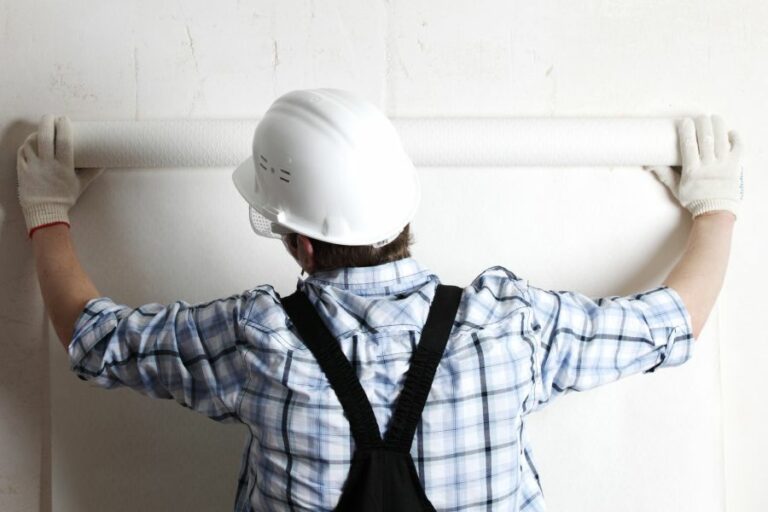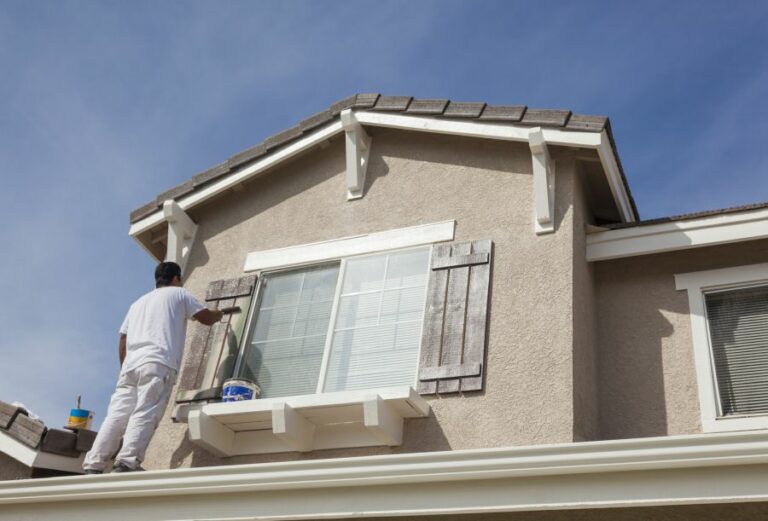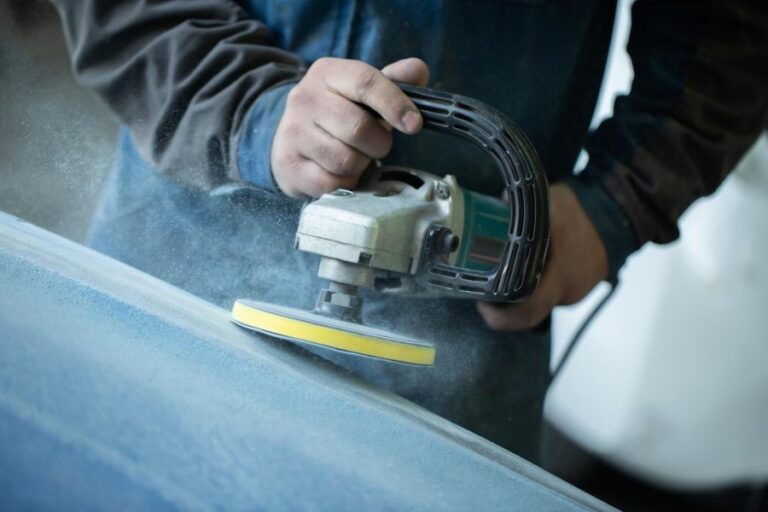Conditions Affecting Surface Prep Efficiency. What Pros Say
Surface preparation plays an essential role when it comes to achieving the perfect finish for your project. Understanding the factors that can impact surface prep efficiency is vital to ensure a flawless result and streamline the process. Fortunately, we have the expertise and insights to help you easily navigate these complexities.
Conditions affecting surface prep efficiency:
Surface preparation efficiency is influenced by factors such as surface contamination (e.g., dust, dirt, grease, oil, rust, old coatings), environmental conditions (e.g., temperature, humidity, wind), and material selection (e.g., coatings, adhesives, cleaning agents, abrasives). Addressing these factors ensures optimal results and lasting performance.

Dive deeper into factors influencing surface prep efficiency, including material types, environmental conditions, equipment choices, and human reliability. Uncover essential tips to optimize your surface preparation process. There’s more to explore. Read on!
Contents
- 1 Factors Influencing Surface Preparation Efficiency
- 2 Key Considerations for Effective Surface Preparation
- 3 Essentials for Successful Surface Coating Application
- 4 Key Aspects for Vessel Surface Preparation Consideration
- 5 Impact of Humidity on Surface Prep and Coating Application
Factors Influencing Surface Preparation Efficiency
• Introduction
Surface preparation is a crucial step in any painting, coating, or bonding application. It significantly influences the quality and longevity of the applied material.
Several factors can affect surface prep efficiency, including surface contamination, environmental conditions, and material selection. Understanding and addressing these factors will ensure optimal results.
• Surface Contamination
Surfaces can have various contaminants that reduce the quality of surface prep. Some common contaminants include:
– Dust & Dirt
Dust and dirt reduce surface prep efficiency by hindering adhesion between the applied material and the surface. Proper cleaning methods, such as pressure washing, can help eliminate dust and dirt. For challenging cases, abrasive blasting techniques like sandblasting may be necessary.
– Grease & Oil
Grease, oil, and other forms of lubricants can cause adhesion issues. It is crucial to remove these contaminants using appropriate solvents or degreasers.
Before selecting a cleaning agent, consult the product’s safety and technical data sheet to ensure compatibility with the surface and the applied material.
– Rust & Corrosion
Rust and corrosion compromise metal surfaces and may be present beneath paint or coatings that appear sound. Effective surface prep requires removing existing rust or corrosion and treating the surface to protect against future issues.
Common methods for rust removal include mechanical scraping, wire brushing, and abrasive blasting.
– Old Coatings & Paint
Old coatings or paint need to be removed or feathered to achieve a solid bond. This can usually be accomplished using mechanical abrasion, hand scraping, or chemical stripping.
I recommend checking the compatibility of chemical stripping agents with the intended coating and surface before using them to avoid potential issues.
• Environmental Conditions
The environment plays a significant role in the efficiency of surface preparation. Important environmental factors include:
– Temperature
Surface and ambient temperatures can influence the performance of coatings, adhesives, and cleaning agents. In general, low temperatures can increase the viscosity of liquid materials and prolong drying times, while high temperatures can have the opposite effect.
Make sure to check the manufacturer’s guidelines for optimal temperature conditions during surface preparation and application.
– Humidity
High humidity levels can contribute to inadequate drying times, condensation, or even corrosion. Properly managing humidity levels is critical for efficient and lasting surface prep. Use dehumidifiers when needed, and check the manufacturer’s recommendations for ideal humidity conditions.
– Wind
Wind can introduce dust, dirt, and other contaminants to the surface during preparation. Wind-driven rain can also interfere with surface prep and its drying process. Working indoors, using wind barriers, or waiting for a less windy day can help minimize the impact of wind on surface preparation.
• Material Selection
Choosing the right materials plays a crucial role in the effectiveness of surface prep:
– Coatings & Adhesives
Selecting the right coating or adhesive for the specific surface and environment ensures better adhesion and performance. It is essential to follow manufacturer recommendations for the proper use, application, and curing times of each product.
– Cleaning Agents
Appropriate cleaning agents are essential for removing contaminants without causing damage to the surface or affecting the adhesion of applied materials. It is crucial to select and use cleaning agents that are compatible with both the surface and the coating or adhesive.
– Abrasives
Choosing the right abrasive for mechanical surface preparation can be the difference between efficient surface preparation and unnecessary damage to the surface. Different abrasives have unique characteristics, and selecting the right one for the specific surface and desired finish is essential.
For more information on selecting the right abrasive, refer to the U.S. General Services Administration’s guide on abrasive blasting techniques.
• Conclusion
Efficient surface preparation is vital to ensure the successful application and performance of coatings, adhesives, and other materials.
By addressing the factors that can impact surface prep efficiencies, such as surface contamination, environmental conditions, and material selection, a high-quality and lasting result can be achieved.
Key Considerations for Effective Surface Preparation
Surface preparation is a crucial step in ensuring the success and longevity of various applications such as painting, coating, bonding, and the overall appearance and performance of materials.
• Factors to Consider in Surface Preparation
– Surface Material
Different materials have unique characteristics and require different preparation techniques. For example, metals such as steel and aluminum need different methods to remove rust or oxidation layers, while porous materials like concrete necessitate the proper removal of contaminants.
– Surface Condition
Assess the current condition of the surface to determine the level and type of preparation needed. This may involve evaluating the degree of dirt, grease, rust, paint, or other contaminants, as well as identifying any imperfections like cracks, roughness, or unevenness that need to be addressed.
– Adhesion Requirements
The adhesion required for the specific application, be it paint, adhesive, or coating must be considered. This involves understanding the bond strength and compatibility between the surface and the applied material.
– Environmental Conditions
Consider the surrounding environment when preparing a surface. Temperature, humidity, and other elements can significantly impact surface preparation and the performance of applied materials. Ensure the surface is prepped under suitable environmental conditions.
– Health and Safety
Safety precautions must always be prioritized during surface preparation. This includes using personal protective equipment (PPE), proper ventilation, and safe handling and disposal of hazardous materials.
• Methods of Surface Preparation
– Cleaning
Cleaning is an essential part of surface preparation, as it removes dirt, grease, oil, and other contaminants that can interfere with adhesion and overall performance. Common cleaning techniques include degreasing solvents, detergents, and steam cleaning. It is important to ensure that the chosen cleaning agent does not leave a residue or harm the surface material.
– Abrasive Blasting
Abrasive blasting, also known as sandblasting or grit blasting, is a mechanical method that utilizes high-pressure air to propel abrasive particles against the surface to remove contaminants, roughen the surface, or create a specific surface texture.
This method is widely used in surface preparation for metals, concrete, and other materials. Suitable abrasives include sand, glass beads, steel shot, and crushed walnut shells. Care must be taken to select the appropriate abrasive and pressure settings to avoid causing damage to the surface.
– Chemical Treatments
Some surface preparation processes may require chemical treatments, such as etching, pickling, or passivation. These treatments involve the use of chemicals like acids, alkalis, or other substances to alter the surface chemistry, remove contaminants, or protect the material from corrosion.
– Mechanical Methods
Common mechanical surface preparation techniques include grinding, sanding, scraping, and wire brushing. These methods remove contaminants and create a smooth, even surface. It is important to select the appropriate tools and equipment for the specific material and surface condition.
American Institute of Steel Construction offers additional information and resources on various surface preparation techniques.
• Expert Recommendations
Based on years of experience, here are some general recommendations for successful surface preparation:
- Assess the surface and determine the appropriate level of preparation needed.
- Choose the correct method(s) of surface preparation based on material, condition, and adhesion requirements.
- Properly clean the surface to remove all contaminants before applying paint, adhesive, or coating.
- Ensure that environmental conditions are suitable for surface preparation and application.
- Always follow health and safety guidelines and use appropriate PPE.
In conclusion, proper surface preparation is essential for the long-lasting and successful performance of various applications. By considering factors such as material, surface condition, adhesion requirements, environmental conditions, and health and safety, one can ensure a well-prepared surface that will contribute to the success of the desired outcome.
Essentials for Successful Surface Coating Application
Surface coating is a crucial process in various industries, as it improves the performance and durability of materials.
Whether in automotive, aerospace, electronics, or even furniture, surface coatings can enhance the appearance, provide protection against corrosion, and increase wear resistance. To achieve high-quality coatings, several conditions must be met.
– Surface Preparation
- Cleaning: The most critical condition in the surface coating process is ensuring a clean and defect-free surface. Contaminants, such as dirt, oil, or grease, can hinder adhesion and lead to an improper coating. Cleaning methods include solvent wiping, vapor degreasing, ultrasonic cleaning, and aqueous cleaning. It is essential to choose the cleaning method appropriate for the material being coated and to verify the cleanliness of the surface before moving on to subsequent treatment steps.
- Chemical Treatment: To improve adhesion and protect the material against corrosion, chemical treatments, such as conversion coatings or passivation layers, can be applied. For example, metal parts commonly undergo a phosphating treatment, while aluminum surfaces may require anodizing.
- Surface Roughness: Another essential condition for robust adhesion is adequate surface roughness. Abrasive blasting, grit blasting, or mechanical grinding are common ways to increase surface roughness and provide a suitable profile for the coating to bond. An appropriate surface profile depends on the specific material and coating applied.
– Environmental Conditions
- Temperature & Humidity: The temperature and humidity of the environment during the coating process significantly affect the outcome. Most coatings have a recommended temperature range within which they must be applied and cured. Temperature can influence the coating’s viscosity, flow, and curing rate. Similarly, humidity affects coating adherence and drying or curing times. It is crucial to control and monitor environmental conditions to ensure proper application.
- Air Quality: The presence of airborne contaminants and dust particles can lead to defects in the coated surface. It is essential to have a clean, dust-free environment to ensure a high-quality coating job.
– Coating Material Considerations
- Viscosity: Coating materials must have the proper viscosity for a successful application. Too high or too low viscosity can result in an uneven coating thickness, poor adhesion, or the formation of defects such as runs, sags, or air bubbles. Adjusting the viscosity often involves the addition of solvents or thinners to the coating material.
- Compatibility: Before applying a surface coating, it is necessary to ensure compatibility between the coating type and the substrate material. This compatibility includes proper adhesion, avoiding chemical reactions, and considering the thermal expansion coefficients of both materials involved.
- Curing Conditions: The proper curing condition is also essential for achieving a durable and robust coating. Curing refers to the process by which the coating material chemically hardens to form a solid film on the substrate. Depending on the coating type, curing may occur via air drying, heat treatment, or exposure to ultraviolet (UV) light. Understanding and following the manufacturer’s specified curing conditions can help obtain optimal coating performance.
– Application Techniques
- Equipment: The choice of coating equipment depends on the desired coating thickness, material properties, and the scale and shape of the part. Popular application techniques include spray guns, powder coating booths, and dip or bath systems. Each technique has its advantages and drawbacks, so selecting the appropriate equipment is critical for a successful coating process.
- Technique: The skill of the operator is another essential condition for producing a high-quality coating. Proper technique involves controlling the equipment settings, holding the device at the correct angle and distance, and maintaining a consistent motion during the coating application. Training and practice are necessary to develop proficiency in these techniques.
- Thickness Control: Accurate control of the coating thickness is essential to ensure the desired performance, appearance, and durability. Thickness can be affected by how much material is applied, the speed of application, and the air pressure or voltage settings on the equipment. It is essential to regularly measure and monitor the coating thickness to make any necessary adjustments.
• Recommendations & Concluding Remarks
From surface preparation to application techniques, several conditions must be met to ensure a successful coating process. To achieve the best possible results:
- Ensure thorough surface cleaning and treatment.
- Control the environmental conditions, such as temperature, humidity, and air quality.
- Consider the properties and requirements of the coating material, including viscosity, compatibility, and curing conditions.
- Choose the appropriate application equipment and technique for the intended purpose.
By adhering to these guidelines and continually monitoring the process, you can achieve high-quality, long-lasting surface coatings. For more detailed information on surface coatings and their requirements, please visit the ASM International website, a leading materials science organization.
Condition | Description |
|---|---|
Clean Surface | The surface to be coated must be free of dirt, grease, and other contaminants. |
Proper Surface Preparation | Surface preparation techniques (e.g., sanding, etching, or chemical treatments) must be used to ensure good adhesion. |
Correct Coating Material | Choose a coating material that is compatible with the substrate and has the desired properties (e.g., corrosion resistance, wear resistance). |
Controlled Environmental Conditions | Temperature, humidity, and other environmental conditions must be controlled to ensure proper curing and adhesion of the coating. |
Proper Application Technique | Use the appropriate application technique (e.g., spray, brush, or dip coating) for a uniform and defect-free coating. |
Inspection and Quality Control | Inspect the coated surface for defects and perform quality control tests to ensure the coating meets the desired properties and performance requirements. |
Key Aspects for Vessel Surface Preparation Consideration
Surface preparation is a crucial step in the process of maintaining and preserving industrial vessels, as it plays a significant role in determining the effectiveness of the coating or lining system.
It involves cleaning, repairing, and preparing the surface of the vessel to ensure better adhesion and improved performance of the protective coatings.
• The Importance of Surface Condition
The condition of the surface directly affects the outcome of the surface preparation process. It is essential to evaluate the state of the vessel and identify areas that require attention, such as:
- Presence of rust, mill scale, or old coatings
- Surface contaminants, such as oil, grease, and dirt
- Presence of protruding welds, sharp edges, or rough surfaces
I recommend conducting a thorough inspection of the vessel’s surface prior to the commencement of surface preparation activities. This ensures that all areas requiring attention are identified and addressed accordingly.
• Surface Preparation Methods
Various methods are available for the surface preparation of industrial vessels. These methods can be broadly classified into four categories:
- Mechanical methods – including abrasive blasting, grinding, and brushing.
- Chemical methods – involving the use of solvents, acids, or alkaline cleaners to remove contaminants or surface layers.
- Thermal methods – such as torching, flame cleaning, or heat-based paint removal.
- Manual methods – such as hand tool cleaning or scraping.
The selection of the appropriate surface preparation method should be based on factors such as the surface condition, the type of coating or lining system to be applied, environmental considerations, and budget constraints.
It is crucial to choose a method that effectively removes contaminants and ensures a suitable anchor pattern for the subsequent coating application.
In my experience, abrasive blasting is the most preferred method for surface preparation of industrial vessels, as it offers the advantage of simultaneous cleaning and profiling, ensuring better adhesion of the protective coating.
• Surface Profile and Roughness
The surface profile, also known as anchor pattern or surface roughness, plays a vital role in the adhesion of coatings to the vessel’s surface.
A suitable surface profile is essential for achieving a strong bond between the coating and the substrate, as well as ensuring the long-term performance of the protective system.
To achieve the desired surface profile, several factors need to be considered, such as:
- The type of abrasive used (e.g., steel shot, steel grit, garnet, or aluminum oxide)
- The size and shape of the abrasive particles
- The blasting pressure and angle
I recommend that the surface profile should be determined based on the specific coating manufacturer’s recommendations or industry standards (e.g., SSPC-SP10 for near-white metal blast cleaning).
• Safety and Environmental Considerations
Safety measures and environmental concerns must be taken into account during the planning and implementation of surface preparation activities. Some of the key considerations include:
- Proper containment and disposal of waste materials, such as spent abrasives and debris
- Use of personal protective equipment (PPE) for workers, including respiratory protection, eye protection, and hearing protection
- Protection of surrounding areas, machinery, and equipment from dust and debris
- Compliance with local regulations and environmental guidelines
To ensure the safety and well-being of workers and the environment, it is advisable to develop a comprehensive safety plan and adhere to best practices in surface preparation.
• Inspection and Quality Control
The success of a coating or lining system significantly depends on the quality of the surface preparation. It is essential to perform inspection and quality control checks during the surface preparation process to ensure that the required standards are met. This includes:
- Verifying the effectiveness of cleaning and the removal of contaminants
- Ensuring that the specified surface profile is achieved
- Confirming the absence of surface defects, such as sharp edges or protruding welds
- Checking for compliance with applicable industry standards and manufacturer’s recommendations
I recommend employing a qualified inspector or third-party inspection agency to carry out the necessary inspections and ensure the highest level of quality in the surface preparation process.
• Conclusion
In conclusion, surface preparation is a vital stage in the maintenance and preservation of industrial vessels.
By considering factors such as surface condition, preparation method, surface profile, safety and environmental concerns, and inspection and quality control, a successful surface preparation process can be achieved.
This will result in improved adhesion, extended service life, and optimal performance of the protective coatings or lining systems applied to the vessels. For more information on surface preparation and the latest industry standards, visit the SSPC (Society for Protective Coatings) website.
No. | Key Aspects for Vessel Surface Preparation Consideration |
|---|---|
1 | Type of vessel |
2 | Material of construction |
3 | Operating conditions |
4 | Surface condition |
5 | Previous coating system |
6 | New coating system requirements |
7 | Cleaning methods and tools |
8 | Health, safety, and environmental factors |
9 | Time and cost constraints |
10 | Inspection and quality control measures |
Impact of Humidity on Surface Prep and Coating Application
Humidity, which refers to the level of water vapor in the air, significantly influences the preparation of surfaces and the effectiveness of coatings.
• The Importance of Surface Preparation
Surface preparation is a vital step in ensuring the successful application of coatings. It involves removing contaminants, such as dust, grease, and oil, and creating an ideal surface profile for the coating to adhere.
An appropriate level of humidity is necessary during this stage to prevent the formation of condensation and corrosion on the surface.
– Controlling Humidity during Abrasive Blasting
Abrasive blasting is a common technique for cleaning and preparing surfaces for coating applications. During this process, the surface is treated with high-velocity abrasive particles to remove contaminants and create a suitable surface profile.
However, abrasive blasting can be highly sensitive to humidity levels.
High humidity can lead to the formation of moisture on the surface, which can cause the abrasive particles to clump together and diminish their effectiveness. It may also cause corrosion to occur, which would compromise the integrity of the structure and the adherence to the coating.
Conversely, low humidity can lead to excessive static charges, posing risks to equipment and operators.
To mitigate these issues, it is crucial to monitor humidity levels during the abrasive blasting process. Many professionals rely on devices such as dew point meters and psychrometers to measure humidity.
Furthermore, dehumidification equipment can be employed to control humidity and create a stable environment for abrasive blasting.
The Society for Protective Coatings (SSPC) provides guidelines for abrasive blasting and humidity control, which can be found here.
• The Impact of Humidity on Coating Application and Drying Time
Once the surface has been prepared, the next step is to apply the coating. Humidity plays a significant role in the success of this stage, as it affects paint adhesion, drying time, and the overall durability of the coating.
– The Role of Humidity in Paint Adhesion
For a coating to adhere properly to a surface, it must first wet the surface and then bond to it. High humidity can interfere with this process by causing moisture to accumulate on the surface.
This moisture can create a barrier between the surface and the coating, reducing adhesion and increasing the risk of coating failure.
In addition, moisture can cause the paint to become diluted, further impairing its ability to bond with the surface. When humidity levels are too low, the paint may dry too quickly, also reducing adhesion.
As a result, it is essential to monitor humidity levels during the coating application and ensure that they fall within the recommended range. Most manufacturers specify ideal humidity conditions on their product data sheets.
– The Effect of Humidity on Drying Time
Humidity levels directly influence drying times for coatings. High humidity can prolong the drying process because water vapor in the air competes with the solvents in the paint to evaporate.
This extended drying time can lead to several issues, including sagging, poor adhesion, and other defects. On the other hand, low humidity can cause the paint to dry too quickly, which may result in inadequate film thickness and reduced coating protection.
To ensure optimal drying times, it is crucial to consider both temperature and humidity during the coating application. By utilizing tools such as hygrometers, professionals can monitor humidity levels and manage the drying process accordingly.
• Recommendations for Managing Humidity during Surface Preparation and Coating Application
Based on personal experience, the following recommendations can benefit professionals in managing humidity levels while preparing surfaces and applying coatings:
- Monitor humidity levels regularly using tools like dew point meters, psychrometers, and hygrometers.
- Refer to the coating manufacturer’s recommendations for ideal temperature and humidity conditions.
- Use dehumidification equipment to control humidity levels during abrasive blasting and coating application.
- Be mindful of the specific needs of each project, as different coatings and surfaces will react differently to humidity.
In conclusion, humidity substantially impacts several aspects of surface preparation and coating application. By carefully monitoring and managing humidity levels, professionals can ensure optimal surface profiles, paint adhesion, and drying times, resulting in successful and long-lasting coatings.







